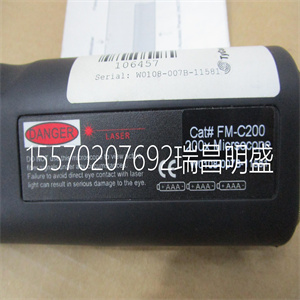
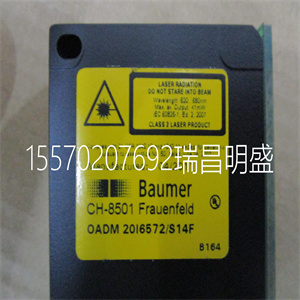
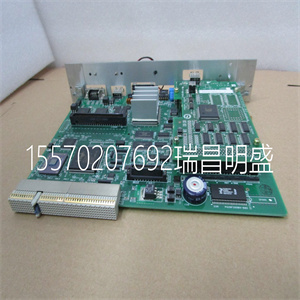

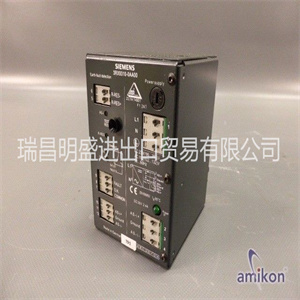







1-D-495978
本节解释了输入、控制逻辑、通信、,
和IMASI23模块的连接。ASI模块
将16个模拟输入连接到和谐控制器。Harmony控制器通过
输入/输出扩展器总线(图1-1)。总线上的每个输入/输出模块都有一个
由其地址双列直插式开关(S1)设置的地址。
模块说明
ASI模块由单个印刷电路板组成
在模块安装单元(MMU)中占用一个插槽。模块前面板上的两个固定闩锁将其固定到模块上
安装单元。
ASI模块有三个卡边缘连接器,用于外部
信号和电源:P1、P2和P3。P1连接到电源
电压。P2将模块连接到输入/输出扩展器总线,
通过它与控制器通信。接头P3
从插入的终端电缆传输输入
终端装置(TU)。现场接线的接线板为
在终端装置上。
模块上的单个双列直插式开关设置其地址或选择
车载测试。跳线配置模拟输入信号的类型。
功能性操作
ASI模块是一个智能模块,具有机载
微控制器和存储器。它通过连接到控制器
输入/输出扩展器总线。车载微控制器允许
ASI模块执行输入通道处理。这
允许控制器执行其他任务。输入处理任务
包括误差补偿、调整和转换为
工程单位。
2-2 WBPEEUI240774A0
功能性操作
每个通道都提供欠范围、超范围和开放输入
侦查车载电路检测到开路的现场导线或
断开的终端装置电缆。打开输入检测
提供用于毫伏、热电偶、RTD、1至5 VDC和4至
20毫安输入类型,可检测以下任意组合:
打开输入线。
图2-1显示了IMASI23模块的框图。
隔离A/D转换器
每个输入通道都有一个A/D转换器(delta-sigma型)。
隔离由直流/直流转换器(每个通道一个)和
A/D转换器数字串行线上的光耦。
每个通道接受电压和电阻输入。电阻测量是通过将电压降数字化来进行的
在输入电阻源上创建。精密恒流源提供用于测量电流的电流
输入
冷端参考
ASI模块测量模拟输入模块终端单元上的冷端RTD。这会导致
现场导线处环境温度的准确读数
终止区域。ASI模块可以使用该值来
补偿双金属产生的电压
图2-1.IMASI23功能框图
D IG ITA L
多路复用器
NVRAM
双端口
内存
内存
N O N VO LATILE
内存
DPRAM
微控制器
发光二极管
在D IC ATO R S中
8-位置
双列直插式开关S1
P3连接器
关于IMASI23
输入来自
T E R M IN AT IO N
设备
输入/输出
E X PA N D E R
公共汽车
接口
第2页
连接器
关于IMASI23
收件人/发件人
控制器
E X PA N D E R
公共汽车
正式舞会
SRAM
冷接点
参考输入
和A/D转换器
O L在E D A/D
转换器1
O L在E D A/D
转换器2
O L在E D A/D
变流器3
•
•
•
•
O L在E D A/D
转换器16
T01062C
功能性操作
WBPEEUI240774A0 2-3
通过端接现场导线(热电偶)进行的连接
电线)安装在终端装置的接线板上。
ASI模块上热电偶输入使用的冷端基准的块地址包含在FC 215中,
规范S3。
为热电偶输入配置的每个模拟输入模块
需要冷接点参考。每个模拟输入模块
只能有一个参考,多可供16人使用
热电偶输入。例外情况是
输入用作远程冷端参考。
有关更多信息,请参阅第4节。
数字输入多路复用器(MUX)
一旦隔离、数字化和缓冲,就会发送输入信号
通过数字多路复用器连接到微控制器。所有输入,
包括基准和冷端输入,如图2-1所示进行多路复用。
微控制器和存储器
车载微控制器协调ASI功能。这个
主要功能包括:
•通道和冷端参考开关。
•编程A/D转换器。
•读取A/D转换器并应用所有必要的校正系数。
•与开关和LED接口(用于诊断模式)。
•背景完整性检查。
•通过双端口读取和写入扩展器总线数据
RAM(DPRAM)。
开关设置
ASI模块有一个八位双列直插式开关,用于选择
输入/输出扩展器总线上的输入/输出模块地址。此开关也
为独立测试选择内置诊断。
2-4 WBPEEUI240774A0
输入/输出扩展器总线
LED指示灯
ASI模块有两个LED指示灯,一个红色,一个红色
绿色,显示运行状态。LED将:
•通电时闪烁红色。
•通过车载诊断后保持关闭(两个LED)
直到ASI模块接通
1-D-495978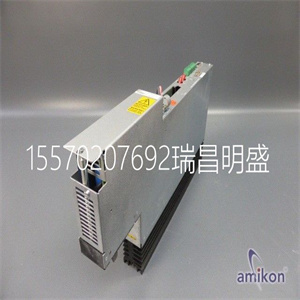
1-D-495978
This section explains the inputs, control logic, communication, and connections for the IMASI23 module. The ASI module interfaces 16 analog inputs to a Harmony controller. The Harmony controller communicates with its I/O modules over the I/O expander bus (Fig. 1-1). Each I/O module on the bus has a unique address set by its address dipswitch (S1). Module Description The ASI module consists of a single printed circuit board that occupies one slot in a module mounting unit (MMU). Two captive latches on the module front panel secure it to the module mounting unit. The ASI module has three card edge connectors for external signals and power: P1, P2 and P3. P1 connects to the supply voltages. P2 connects the module to the I/O expander bus, over which it communicates with the controller. Connector P3 carries the inputs from the termination cable plugged into the termination unit (TU). The terminal blocks for field wiring are on the termination unit. A single dipswitch on the module sets its address or selects onboard tests. Jumpers configure the type of analog input signals. Functional Operation The ASI module is an intelligent module with an onboard microcontroller and memory. It interfaces to a controller over the I/O expander bus. An onboard microcontroller allows the ASI module to perform the input channel processing. This allows the controller to do other tasks. Input processing tasks include error compensation, adjustments, and conversion to engineering units. 2 - 2 WBPEEUI240774A0 Functional Operation Each channel provides underrange, overrange, and open input detection. Onboard circuitry detects either open field wires or a disconnected termination unit cable. Open input detection is provided for millivolt, thermocouple, RTD, 1 to 5 VDC, and 4 to 20 milliampere input types and can detect any combination of open input wires. Figure 2-1 shows a block diagram of the IMASI23 module. Isolated A/D Converter Each input channel has an A/D converter (delta-sigma type). Isolation is done by DC/DC converters (one per channel) and optocouplers on the digital serial line of the A/D converter. Each channel accepts voltage and resistance inputs. Resistance measurements are made by digitizing the voltage drop created across the input resistance source. A precision constant current source supplies the current used to measure the input. Cold Junction Reference The ASI module measures the cold junction RTDs on the termination unit of the analog input module. This results in an accurate reading of the ambient temperature at the field wire termination area. This value can be used by the ASI module to compensate for voltages generated from the bimetal Figure 2-1. IMASI23 Functional Block Diagram D IG ITA L MULTIPLEXER NVRAM DUAL PORT RAM MEMORY N O N VO LATILE RAM DPRAM MICROCONTROLLER LED IN D IC ATO R S 8-PO SITIO N DIPSWITCH S1 P3 CONNECTOR ON IMASI23 INPUTS FROM T E R M IN AT IO N DEVICE I/O E X PA N D E R BUS INTERFACE P 2 CONNECTOR ON IMASI23 TO/FROM CONTROLLER E X PA N D E R BUS PROM SRAM COLD JUNCTION REFERENCE INPUT AND A/D CONVERTER IS O L AT E D A /D CONVERTER 1 IS O L AT E D A /D CONVERTER 2 IS O L AT E D A /D CONVERTER 3 • • • • IS O L AT E D A /D CONVERTER 16 T01062C Functional Operation WBPEEUI240774A0 2 - 3 connections made by terminating the field wires (thermocouple wires) onto the terminal blocks of the termination unit. The block address of the cold junction reference used by thermocouple inputs on the ASI module is contained in FC 215, specification S3. Each analog input module configured for a thermocouple input requires a cold junction reference. Each analog input module can only have one reference which can be used by up to 16 thermocouple inputs. The exception to this is when one of the inputs is used as a remote cold junction reference. Refer to Section 4 for more information. Digital Input Multiplexer (MUX) Once isolated, digitized, and buffered, the input signal is sent to the microcontroller by a digital multiplexer. All the inputs, including the references and cold junction input, are multiplexed as shown in Figure 2-1. Microcontroller and Memory The onboard microcontroller coordinates ASI functions. The main functions are: • Channel and cold junction reference switching. • Programming A/D converters. • Reading the A/D converters and applying all necessary correction factors. • Interfacing to switch and LEDs (used for diagnostic mode). • Background integrity checking. • Reading and writing expander bus data through dual port RAM (DPRAM). Switch Settings The ASI module has one eight-position dipswitch to select the I/O module address on the I/O expander bus. This switch also selects built-in diagnostics for stand alone testing. 2 - 4 WBPEEUI240774A0 I/O Expander Bus LED Indicators The ASI module has two LED indicators, one red and one green, which show the operating status. The LEDs will: • Flash red on power-up. • Remain off (both LEDs) after passing onboard diagnostics until the ASI module is configured by the controller. • Show solid green after the controlling controller downloads configuration data. • Show solid green during normal running. • Blink green when the controller that configured the ASI module enters configure mode from execute mode. • Blink green if I/O expander bus communication is lost (if the controller is removed). • Show solid red if a fatal failure of the ASI module occurs. For example, if power up diagnostics fail. • Show solid red for a power fail interrupt (PFI). I/O Expander Bus The I/O expander bus is a high-speed, synchronous, parallel bus. It provides a path between controllers and I/O modules. The controller sends control functions to the ASI module, and the ASI module provides input data to the controller. The P2 card edge of the ASI module and controller connect to the bus. The I/O expander bus is parallel signal lines located on the module mounting unit backplane. A 12-position dipshunt placed in a socket on the MMU backplane connects the bus between the controller and I/O modules. Cable assemblies can extend the bus to eight module mounting units. A controller and its I/O modules form a subsystem within a Harmony control unit (HCU). The I/O expander bus between control and I/O subsystems must be separated. Leaving a dipshunt socket empty or not connecting the module mounting units with cables separates them
Copyright ©2019-2022 瑞昌明盛自动化设备有限公司 版权所有 赣ICP备2021006016号